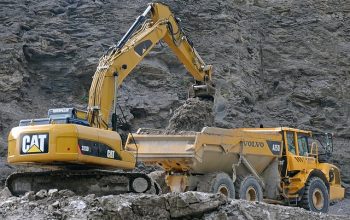A vehicle's past, especially its commercial truck accident history, provides critical insights into safety hazards and reliability. Fleet managers can uncover patterns like brake or structural issues by analyzing beyond just accidents. This data enables data-driven decisions on maintenance and replacement, enhancing road safety and saving lives. Understanding a truck's history is crucial for insurance, legal matters, and regulatory compliance. Comprehensive background checks, including accident history, damage reports, and maintenance records, are key to maintaining vehicle safety. Specialized software cross-references data to identify recurring problems, and thorough inspections uncover latent issues. Commercial Truck Accident History checks are indispensable tools that help managers identify risks, ensure vehicle reliability, mitigate future defects, prioritize safety, protect reputations, and demonstrate responsibility.
In the high-stakes world of commercial trucking, understanding a vehicle’s history is not merely an option—it’s a safety imperative. Commercial Truck Accident History checks are instrumental in identifying past incidents that can reveal critical insights about a truck’s condition. Recent recalls, such as General Motors’ massive pickup and SUV recall due to brake defects, underscore the importance of proactive measures. This article delves into the significant impact of accident history analysis, how it uncovers wear and tear, serves as a catalyst for industry-wide safety reforms, and empowers fleet managers to make data-driven decisions, ultimately enhancing both vehicle reliability and road safety.
- The Impact of Commercial Truck Accident History
- Wear and Tear: Uncovering Potential Issues
- Recent Recalls: A Wake-Up Call for Safety
- Fleet Managers' Role in Ensuring Vehicle Safety
- Comprehensible Accident History Checks: Step-by-Step
- Benefits of Thorough Vehicle Inspection
- Enhancing Reliability and Mitigating Risks
The Impact of Commercial Truck Accident History

A thorough examination of a vehicle’s past, specifically its commercial truck accident history, offers invaluable insights into potential safety hazards and reliability issues. Beyond simply identifying previous accidents, this process reveals patterns or recurring problems that may have been overlooked in initial inspections. For instance, frequent collisions at rear ends could indicate brake system deficiencies, while multiple rollovers might point to structural weaknesses or improper loading practices.
This historical data is crucial for fleet managers as it enables them to make data-driven decisions regarding vehicle maintenance and replacement. By proactively addressing identified issues, they can significantly enhance road safety, reduce the risk of future accidents, and ultimately save lives. Moreover, understanding a truck’s accident history can play a pivotal role in insurance claims, legal proceedings, and ensuring compliance with regulatory standards.
Wear and Tear: Uncovering Potential Issues

The process of examining a vehicle’s accident history goes beyond simply identifying past collisions. It also involves delving into wear and tear patterns, which can offer critical insights into potential underlying issues. Through meticulous review, professionals can uncover signs of regular use, excessive strain on certain components, or evidence of previous repairs. This knowledge is invaluable as it allows for proactive measures to be taken. For instance, if a truck’s accident history reveals repeated incidents of brake failures, fleet managers can schedule more frequent brake system inspections and replacements, thereby mitigating the risk of future accidents caused by this critical component’s deterioration.
Moreover, understanding wear and tear patterns can help in making informed decisions about vehicle maintenance schedules. By recognizing which parts are more susceptible to aging or damage, fleet managers can prioritize maintenance routines accordingly. This proactive approach not only enhances the overall reliability of the trucking fleet but also contributes to cost-efficiency by minimizing unexpected breakdowns and safety hazards on the road.
Recent Recalls: A Wake-Up Call for Safety

Recent recalls, such as General Motors’ massive recall of diesel-powered trucks and SUVs, serve as a stark reminder of the potential dangers lurking within vehicle components. These voluntary actions by manufacturers highlight critical safety issues that can have severe consequences if overlooked. This wake-up call underscores the imperative for fleet managers to go beyond basic maintenance checks. They must integrate thorough accident history reviews into their routine practices.
By examining a truck’s past, managers can identify recurring patterns or underlying problems that may not be immediately apparent. Such insights enable them to take proactive measures, ensuring that their fleets are safe and in compliance with regulatory standards. This proactive approach is vital in minimizing the risk of accidents, protecting both drivers and other road users.
Fleet Managers' Role in Ensuring Vehicle Safety

Fleet managers play a pivotal role in ensuring the safety and integrity of commercial trucks within their fleet. They are responsible for conducting thorough background checks, including accident history, on each vehicle before acquiring or hiring them. This process involves verifying previous accidents, damage reports, and maintenance records to identify potential red flags. By doing so, they gain valuable insights into a truck’s overall condition and performance.
In addition to initial inspections, fleet managers must stay updated with ongoing vehicle monitoring. Regular maintenance checks, driver feedback, and safety audits contribute to identifying wear and tear or emerging issues. Promptly addressing these concerns through timely repairs and replacements not only enhances vehicle safety but also prevents costly accidents and legal liabilities.
Comprehensible Accident History Checks: Step-by-Step

Comprehensive Accident History Checks are a meticulous process designed to uncover any past incidents or issues with a vehicle. It begins with gathering all relevant records, including police reports, insurance claims, and maintenance logs. These documents provide an initial overview of accidents, their severity, and associated repairs. Next, specialized software tools can be employed to cross-reference and analyze this data, identifying patterns or recurring problems.
The step-by-step process involves inputting vehicle details into the system, which then searches for matching records across various databases. These checks should consider both minor fender benders and more significant incidents, as even seemingly minor accidents can indicate underlying structural weaknesses. Once potential issues are identified, a thorough inspection of the vehicle becomes necessary to verify and assess the extent of any damage or wear.
Benefits of Thorough Vehicle Inspection

A thorough vehicle inspection goes beyond merely checking for external damages after an accident. It involves a meticulous examination of every component, from brakes and tires to engine functionality and electronic systems. This comprehensive approach is crucial in identifying latent issues that might have been missed during routine checks or overlooked due to the vehicle’s age. By uncovering these hidden defects, fleet managers can take proactive measures to prevent future accidents, thus enhancing overall safety.
Moreover, regular inspections provide valuable data on a truck’s performance history. This information allows for better maintenance planning, ensuring that vehicles receive timely repairs and replacements. As a result, trucks are kept in optimal condition, increasing their lifespan and reducing the risk of breakdowns or unexpected malfunctions during transit.
Enhancing Reliability and Mitigating Risks

In the commercial trucking sector, where every trip counts and safety is paramount, understanding a vehicle’s past is not just beneficial but crucial. A thorough Commercial Truck Accident History check serves as a powerful tool for fleet managers, providing them with invaluable insights into potential risks. By examining previous accidents and incidents, they can identify recurring issues, patterns of wear and tear, and even uncover underlying mechanical problems that might have been overlooked otherwise. This proactive approach to vehicle maintenance enhances reliability, ensuring that trucks are in optimal condition to navigate the road safely.
Moreover, these checks play a pivotal role in mitigating risks. Recent recalls like General Motors’ highlight the potential dangers of undetected defects. By conducting rigorous accident history reviews, fleet managers can stay ahead of such issues, making necessary repairs or replacements before they escalate. This not only safeguards the well-being of drivers and other road users but also protects the reputation of trucking companies by demonstrating their commitment to safety and responsibility.
In the commercial trucking industry, where safety is paramount, understanding a vehicle’s past through comprehensive accident history checks is crucial. By revealing previous incidents and potential wear and tear, fleet managers can make informed decisions to ensure the safety and reliability of their fleets. Recent recalls, such as General Motors’ large-scale action, serve as a stark reminder of the importance of these checks. Adhering to rigorous inspection protocols not only enhances vehicle performance but also mitigates risks, fostering a culture of safety that protects both drivers and the public.



